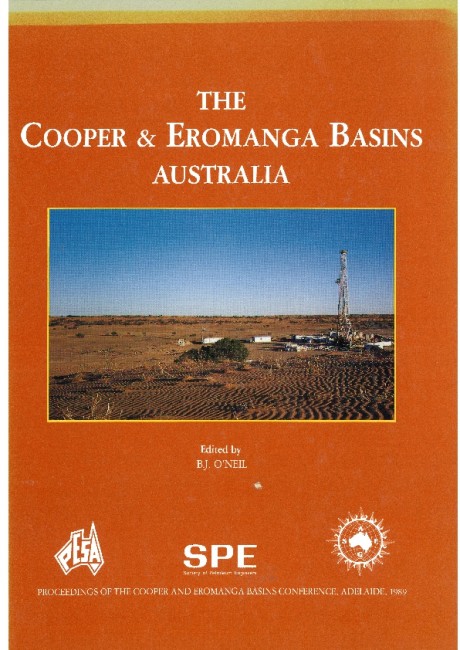Publication Name: The Cooper & Eromanga Basins Australia
Authors: P.J. Muller
Date Published: June 1989
Number of Pages: 27
Reference Type: Book Section
Abstract:
The Eromanga Basin consists essentially of a multilayered aquifer system which contains two distinct groups ofaquifers, namely those in the pre-Wallumbilla Formation units, and those in the Wallumbilla Formation and ounger units. The two groups reflect groundwater environments differing in the nature of the aquifers, hydraulics, and water chemistry. In particular, sodium bicarbonate waters predominate in the lower group and sodium chloride waters with higher average salinities in the upper group.
The present-day regiop.al groundwater flow directions in the Hooray Sandstone may indicate broadly the migration paths of petroleum, but the effects of local flow conditions, which are generally unknown, are of obvious importance. Groundwaters in, and near, the recharge area are mostly of the sodium chloride or sodium
bicarbonochloride types with considerable amounts of calcium, magnesium, and sulphate. The waters evolve
along flow paths to produce waters rich in sodium and bicarbonate. The proportion of chloride in some waters
in the western part of the area suggests possible intermixing with sodium chloride type waters from deeper or shallower aquifers. Mixing of waters via faults is indicated in an area to the west of the Canaway Fault where the Winton and Mackunda Formations yield water with the same chemical characteristics as water from the Hooray Sandstone. In areas where vertical leakage between aquifers occurs, hydrocarbons are probably prevented from accumulating in potential reservoirs. A groundwater divide stretching northeast from Betoota has been inferred from salinity and boron concentrations. This divide effectively prohibits the north-westwards migration of hydrocarbons from potential source rocks in the Ullenbury Depression and Cooper and Thomson Synclines. The high boron content of some waters indicates possible marine incursions during deposition of the Hooray Sandstone, or intermixing with water derived from marine sediments.


